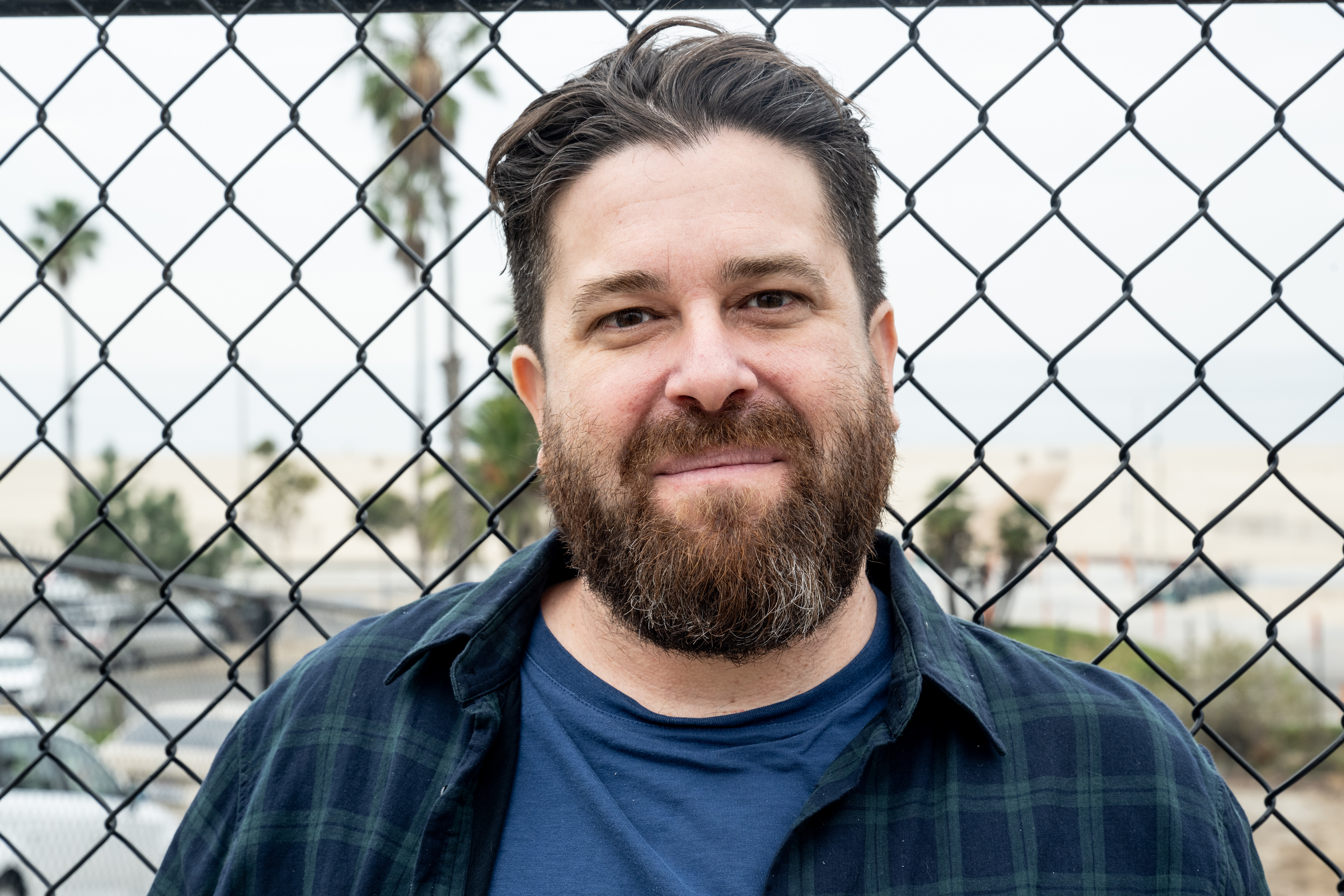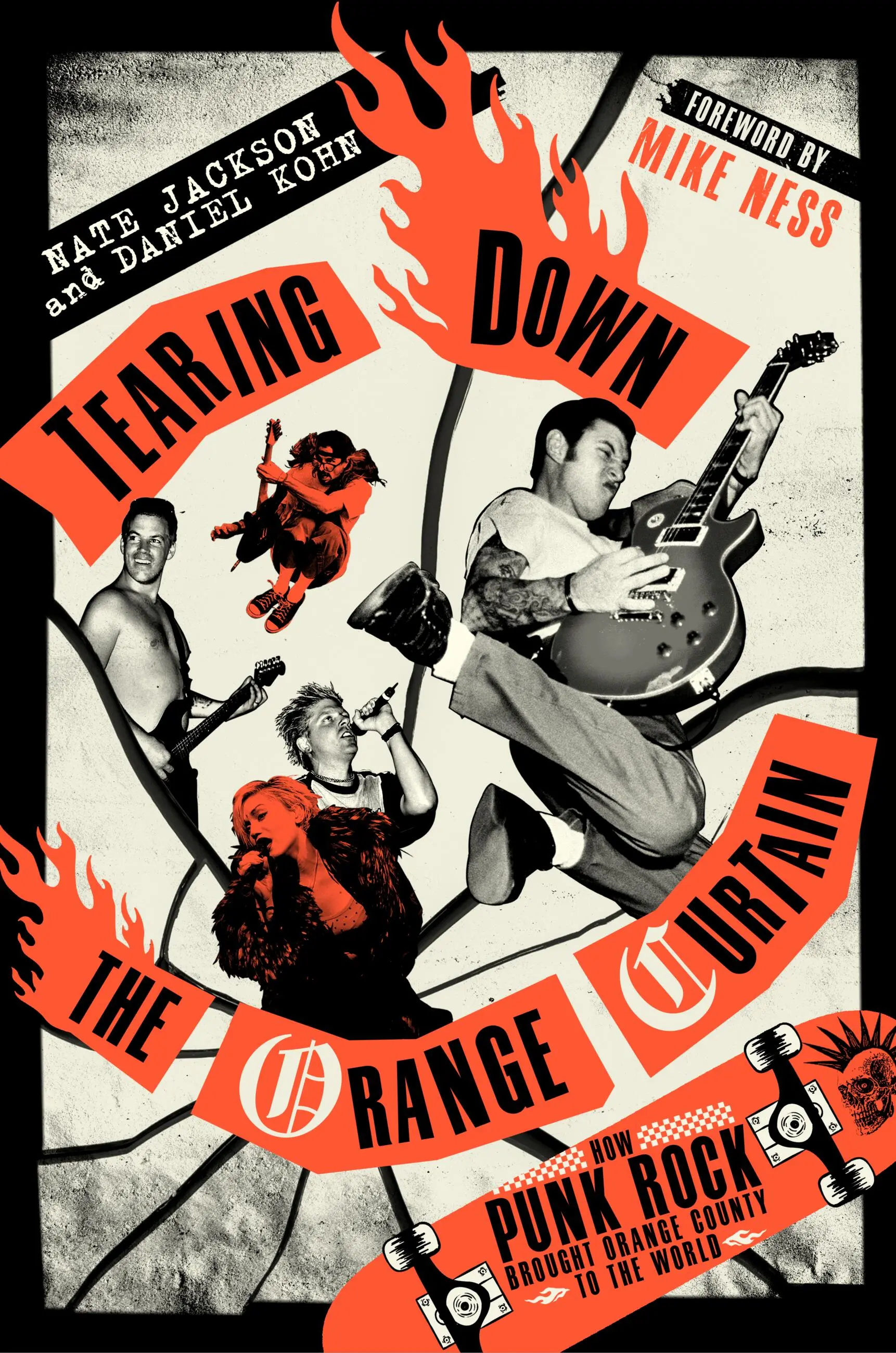
Introducing: The IHTOV Zine
Published on Dec 15, 2025
Christmas Music Selections
Published on Dec 14, 2025
The Beastie Boys and Me
Published on Dec 10, 2025
The Doors and Me
Published on Dec 8, 2025
More Liner Notes…
Featured Conversation: Talking With Daniel Kohn
Published on Apr 29, 2025


IHTOV correspondent Owen Brazas talks to author Daniel Kohn about the OC punk rock scene and his forthcoming book about it.
IHTOV: OC Punk from 78-00s certainly evolved and flowed while still retaining a distinctive character. If you were to pick 3 albums for a listener who was just getting into it what would you give them? Can you remember when you first heard these records, what was it about them that pulled you in?
DK: Great question! There are so many formative albums, but if you want to get your foot in the door, the ones I’d suggest (in no particular order) are: The Adolescents (Blue Album), Social Distortion (self-titled), and the Offspring’s Smash. I only discovered the Adolescents later when I moved to Southern California, but the songs aren’t just a snapshot in time, they’re an incredible moment of a band of wild outsiders creating a beautiful brand of melodic hardcore that was so damn catchy! As someone once told me, they were OC’s version of the Buzzcocks – or should have been. With the ’90s punk boom, nothing would have been possible without SD’s 1990 self-titled album. Everyone knows it for Mike Ness’s hard-scrabble storytelling, but it’s the album where he grew up. “Story of My Life,” “Sick Boys” and “Ball and Chain” are all-timers and veer away from hardcore and closer to roots rock. Two of these three songs remain rock radio staples today and help bring the band beyond Another State of Mind and its hardcore fans,and to the mainstream. Lastly, what’s not to say about Smash? I remember seeing the “Come Out and Play” video for the first time as a seventh grader in the summer of 1994, and was blown away. An album like that, released on an indie label, isn’t supposed to conquer the world, yet it did. What is the common thread? These were the songs of the suburbs that retained 1000000% authenticity. That’s what always grabbed me about them. The truth. Regardless of being based in Southern California, these songs and sounds were of the suburbs and relatable to anyone from there.
IHTOV: They say the environment filters into musical movements, but it is the Seattle sound, first wave New York Punk, Manchester, etc. What is it about the place Orange County that helps make this music what it is?
DK: OC has always been seen as L.A.’s little brother. People from there have a chip on their shoulder, and the music reflected that. All of the area’s greatest exports (Social D, Offspring, No Doubt, and Sublime) have just as much in common as local heroes like the Vandals, Adolescents, Agent Orange, and T.S.O.L. In fact, the band that perhaps best exemplifies the environment’s eclecticness is the Cadillac Tramps. They were the best band to never “make it,” yet opened for Pearl Jam on a 1993 run. So why this place? They created their own culture. At the time these bands discovered punk, the first wave was already dying out. They kept it going and ended up ushering in a new wave of punk that incorporated American roots music, ska into hardcore. Being an outsider and away from the trends and not giving a fuck about what they are ended up helping the music evolve.
IHTOV: When initially discovering this music for yourself, how did you find it? Older sibling, friend, or a friendly record store clerk?
DK: The first time I saw SD was on MTV, same with the Offspring and No Doubt. At the time, MTV ruled, especially for kids from the burbs. It was a powerful tool, especially when you couldn’t get to a record store (at least I couldn’t) easily.
IHTOV: Speaking of record stores, these stores seem to be an important part of the community, were there any key record stores for yourself or mentioned by bands in the scene that were important to the group?
DK: There’s Fingerprints in Long Beach that remains a staple in the L.A./OC area. But mostly, it was a DIY culture that relied on stores that sadly no longer exist.
IHTOV: I discovered OC punk via skateboard videos in the late 80s/early 90s, can you speak to how this music started to spread and infiltrate areas outside of its homebase?
DK: Ah, yes, skateboard videos. They were critical, especially in OC to introduce local bands to others locally. That was how the groundswell of knowledge happened in the most grassroots sense. For locals, by locals. The tapes were sold in skate shops that catered to this culture, which, much further down the road manifested itself in the collision that became the Warped Tour. And the rest, they say, is history.

IHTOV: Did you find the 7" an important element of the OC scene?
DK: Oh yes. Just go on Discogs and see how much that first Middle Class 7-inch goes for! It was a cheap (and efficient) way to get your music out. They were limited pressings but once the buzz was on, it attracted local labels like Posh Boy and Frontier. A gateway for music if you will.
IHTOV: Let’s talk art and design. A lot of OC punk have iconic and bold album covers and logos. What are some of your favorites? Have you ever bought an album based solely on the artwork?
DK: I have not, but my favorites are ones that capture the ethos of what you’re about to listen to. So, Social Distortion’s Mommy Little Monster and Prison Bound are great examples, as is No Doubt’s Tragic Kingdom, T.S.O.L.’s Dance With Me and the Vandals’ Peace Thru Vandalism. The most famous, though, is probably Smash. That skeleton is still an essential part of what people associate with the Offspring.
IHTOV: What albums currently are keeping the blood pumping on OC punk?
DK: Where to start?! Many of the albums I mentioned are critical to the bedrock of OC punk. The scene is not like it was (what is?), but what will get all eyes back on Orange County is Social Distortion’s first album in many years. If the live versions are any indication of what’s to come, then the album is sure to be a winner. Mike Ness is an incredibly underrated songwriter and artist.
IHTOV: Tearing Down the Orange Curtain comes out on May 20th. When researching and developing the book did you find yourself discovering history/stories that may have taken you down different paths where maybe you didn’t think you would end up when you first envisioned presenting the story of OC punk, maybe even enriching/surprising your own knowledge of the scene?
DK: Yes and no. My co-author, Nate Jackson, and I had a loose idea of the story structure and narrative going in when we first began work on it nearly six years ago… and that knowledge came from over a decade and a half of reporting on the scene. Of course, some candid moments and stories that were both heartwarming, horrifying, and sometimes both (!) that we learned. Every interview gained a different perspective and appreciation of that scene, from those in it and the secondaries who were either adjacent to, or admirers of it. Having conducted well over 100 interviews with all sorts of folks, it is so rewarding to see this thing come to life. Some of my favorite moments were colored by the folks who most have never heard of. So, being that I’m from Long Island, I didn’t know a lot of the main pressure points of the early years of OC punk (the ’70s and most of the ’80s) and why they were there. That, perhaps, was the most enriching part. As for the surprising bit, everyone we encountered believed in this project and understood the importance of telling this story in the most accurate way possible. For that, I’m forever grateful and honored that we were trusted with their stories…the stories of their life.
Tearing Down the Orange Curtain: How Punk Rock Brought Orange County to the World is out on May 20, 2025.

